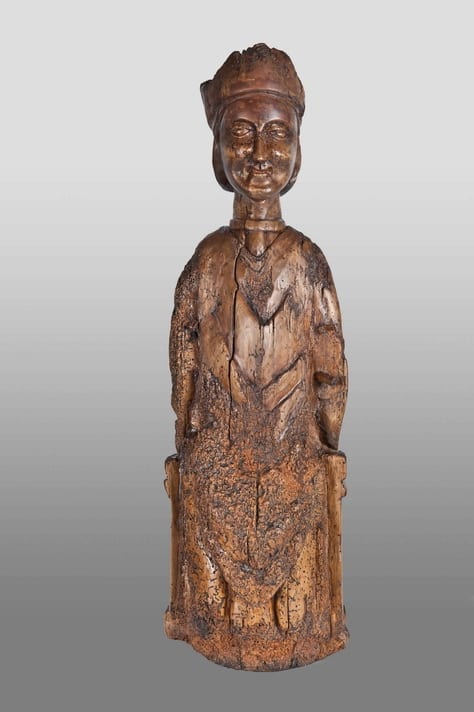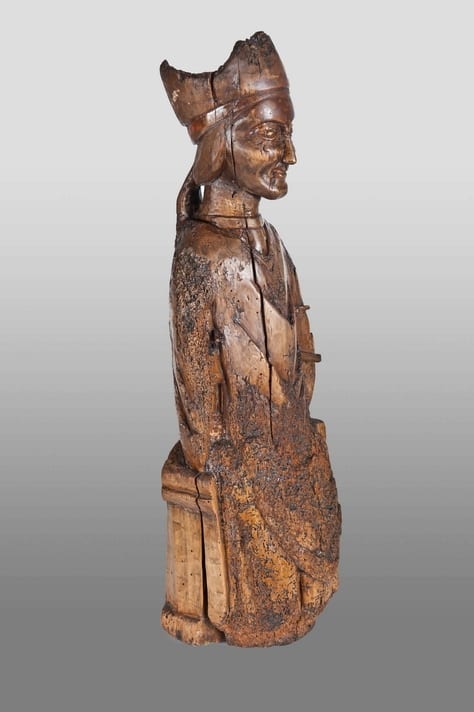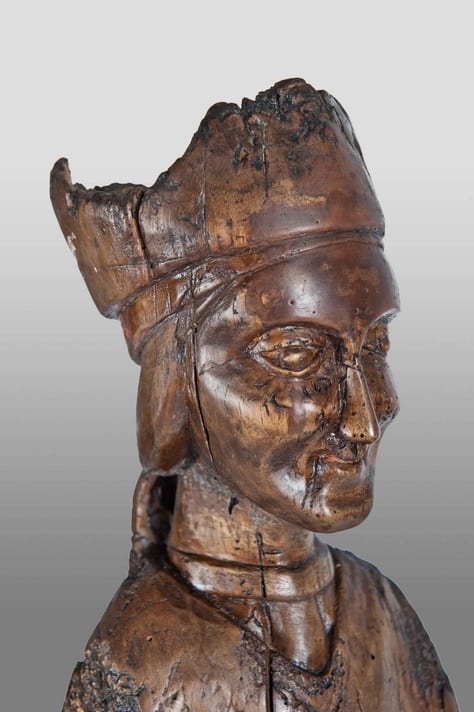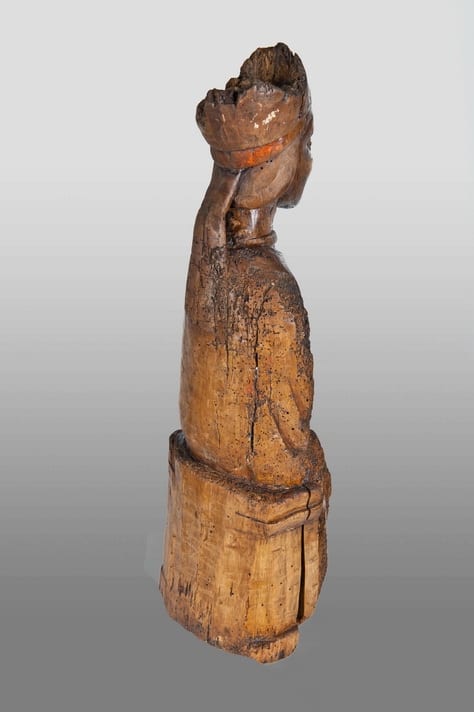Romanesque sculpture of Saint Boniface
Possibly German
W 9" × H 29.25" × D 8"
Stock # Marh206
SOLD
Saint Boniface
from the book "Little Pictorial Lives of the Saints"
Bishop and Martyr
Born c. 672
Crediton, Devon
Died 5 June 754 (aged 82)
Dokkum, Frisia
Venerated in Roman Catholic Church,
Eastern Orthodox Church,
Lutheran Church,
Anglican Communion
Major shrine Fulda Cathedral
Feast 5 June
Saint Boniface (Latin: Bonifacius) (c. 672 – 5 June 754), the Apostle of the Germans, born Winfrid, Wynfrith, or Wynfryth in the kingdom of Wessex, probably at Crediton (now in Devon, England), was a missionary who propagated Christianity in the Frankish Empire during the 8th century. He is the patron saint of Germany and the first archbishop of Mainz. He was martyred in Frisia in 754. His remains were returned to Fulda, where they rest in a sarcophagus which became a site of pilgrimage.
Facts about Boniface's life and death as well as his work became widely known, since there is a wealth of material available—a number of vitae, especially the near-contemporary Vita Bonifatii auctore Willibaldi, and legal documents, possibly some sermons, and above all his correspondence. Through his efforts to reorganize and regulate the church of the Franks, he helped shape Western Christianity, and many of the dioceses he proposed remain until today. After his martyrdom, he was quickly hailed as a saint in Fulda and other areas in Germany and in England. His cult is still notably strong today. Boniface is celebrated (and criticized)[1] as a missionary; he is regarded as a unifier of Europe, and he is seen (mainly by Catholics) as a German national figure.
In overall very good condition, some old worm not active.




